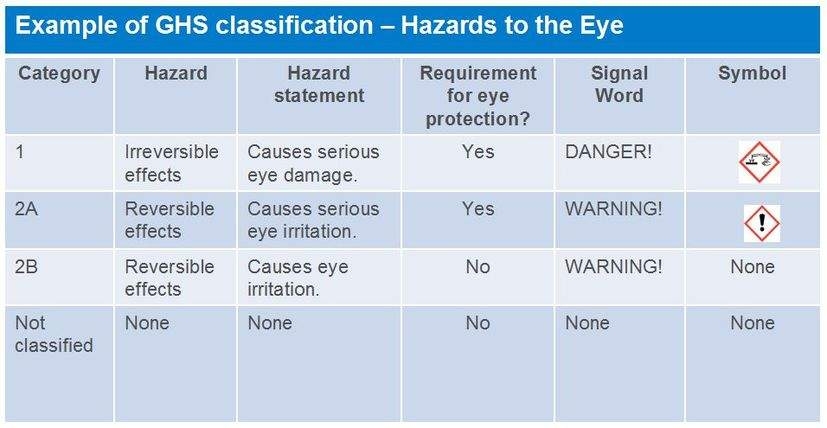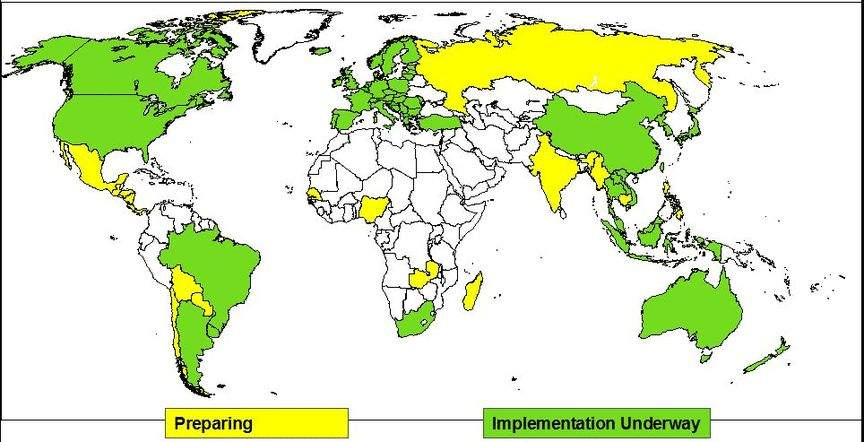5.2: Toxicología Regulatoria Global
( \newcommand{\kernel}{\mathrm{null}\,}\)
- 1: Definir lo que se entiende por “toxicología regulatoria global”
- 2: Dar un ejemplo de una directriz regulatoria global
¿Qué es la Toxicología Regulatoria Global?
La toxicología regulatoria global es exactamente como suena, trata de la toxicología regulatoria a escala global (es decir, todo el planeta). En relación con otras jurisdicciones (por ejemplo, naciones, estados, ciudades), hay pocas iniciativas de toxicología regulatoria que sean de naturaleza global. Algunas iniciativas (por ejemplo, agua potable limpia, aire limpio) con intenciones similares pueden abarcar muchas partes del mundo y parecer globales, pero carecen de un consenso global.
Las iniciativas globales de toxicología regulatoria a menudo se originan en actividades de las Naciones Unidas (ONU), una organización global que reúne a los países miembros para enfrentar desafíos comunes.
Ejemplo de Toxicología Regulatoria Global: Sistema Globalmente Armonizado (GHS)
El nombre completo es el Sistema Globalmente Armonizado de Clasificación y Etiquetado de Productos Químicos (GHS). Fue creado por la ONU. El trabajo en GHS comenzó en 1992 y la primera edición se estrenó en 2003. El GHS se actualiza cada dos años. El objetivo es armonizar los criterios por los cuales se clasifican los productos químicos en cuanto a sus peligros. Los peligros incluyen la salud física (por ejemplo, inflamabilidad), ambiental (por ejemplo, toxicidad para los peces) y la salud humana (por ejemplo, personas con toxicidad aguda).

El Sistema Globalmente Armonizado (GHS)
Antes del Sistema Globalmente Armonizado (SGA), cada país tenía sus propios criterios para la clasificación de peligros, y algunos países tenían múltiples criterios. Esto proporcionó desafíos y confusión al público en general y a otros interesados. El GHS es una directriz, no una regulación. Sin embargo, una vez adoptado por un país, el GHS generalmente se convierte en una regulación.

Tema 2: Puntos clave
En esta sección, exploramos los siguientes puntos principales:
- 1: ¿Qué es la Toxicología Regulatoria Global?
- 2: El Sistema Globalmente Armonizado (SGA)
1. ¿Cuál de los siguientes se involucra generalmente en el establecimiento de una iniciativa global de toxicología regulatoria?
Agencia de Protección Ambiental (EPA)
Naciones Unidas (ONU)
Administración de Alimentos y Medicamentos (FDA)
Todo lo anterior
- Responder
-
Naciones Unidas (ONU)
2. ¿Cuál de los siguientes es un ejemplo de una iniciativa global de toxicología regulatoria?
Ley de Aire Limpio
Ley de Agua Limpia
Sistema Globalmente Armonizado
Ley de Agua Potable Segura
- Responder
-
Sistema Globalmente Armonizado


